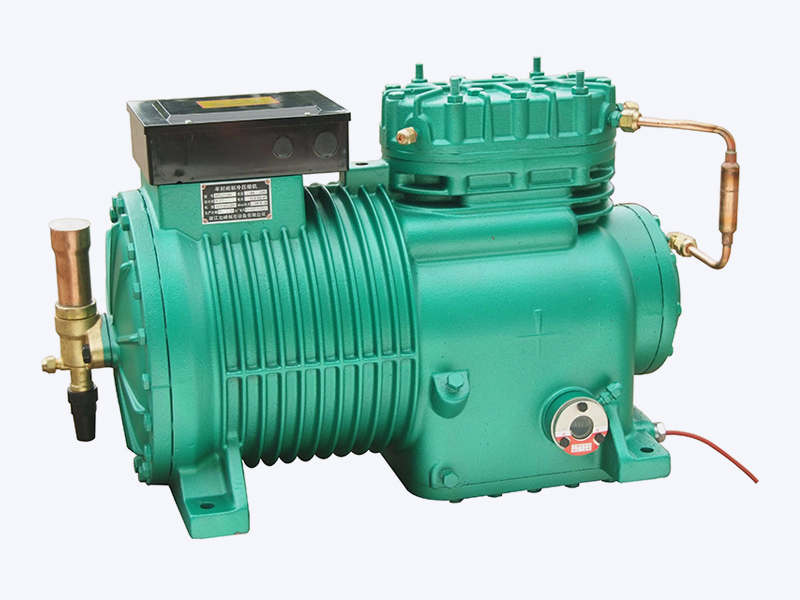Ambient conditions, including temperature and humidity, have a significant impact on the performance of semi-hermetic compressors in industrial applications. Here's how:
High Ambient Temperature: Elevated ambient temperatures impose greater thermal loads on semi-hermetic compressors, intensifying the compression process. As temperatures rise, the compressor's cooling capacity may become insufficient to dissipate heat effectively, leading to higher discharge temperatures and pressures. This can result in reduced volumetric efficiency, increased power consumption, and potential overheating of compressor components such as motor windings and valve plates. Adequate ventilation and cooling strategies, including proper airflow management and the use of auxiliary cooling devices like fans or heat exchangers, are essential to mitigate these effects and maintain optimal compressor performance.
Low Ambient Temperature: In colder ambient conditions, the density of the refrigerant decreases, affecting both the compressor's capacity and efficiency. Semi-hermetic compressors may experience reduced mass flow rates and lower compressor efficiencies due to the decreased refrigerant density, resulting in decreased cooling capacity and potential performance degradation. Lower temperatures can cause lubricants to thicken, impairing lubrication and potentially leading to increased friction and wear on moving parts. Compressors designed for specific temperature ranges may incorporate features such as crankcase heaters or low-ambient control valves to address these challenges and ensure reliable operation in colder environments.
High Humidity: High humidity environments present challenges related to moisture control within semi-hermetic compressors. Moisture in the air can condense within the compressor system, leading to the formation of water droplets and potential corrosion of internal components. Moisture can also mix with refrigerant, causing refrigerant contamination and reducing system efficiency. To address these issues, moisture removal devices such as desiccant dryers or moisture separators may be employed to trap moisture before it enters the compressor system. Regular maintenance practices, including proper drainage of condensate and periodic inspection of moisture-sensitive components, are essential to prevent moisture-related damage and ensure reliable compressor performance.
Low Humidity: While low humidity conditions generally pose fewer challenges than high humidity environments, they can still impact compressor performance, particularly in terms of electrostatic discharge (ESD) risk. Dry air increases the likelihood of static electricity buildup within the compressor, which can discharge and damage sensitive electronic components. Grounding measures and anti-static precautions, such as conducting surfaces and static dissipative materials, may be implemented to mitigate ESD risks and safeguard compressor electronics in low humidity environments.
Synergistic Impact: Ambient temperature and humidity often interact synergistically, amplifying their individual effects on compressor performance. For example, high temperatures coupled with high humidity levels exacerbate thermal stresses on the compressor and increase the risk of moisture-related issues such as corrosion and refrigerant contamination. Conversely, low temperatures combined with low humidity levels may heighten the risk of static electricity buildup and ESD-related damage to compressor electronics. Understanding the interplay between ambient conditions is crucial for implementing comprehensive environmental control strategies that address the combined effects and ensure optimal compressor performance across diverse operating environments.
Semi-Hermetic Compressor(3HP-15HP)

The same serial compressors are available for many kinds of refrigerants such as R134a, R404a, R407C and R22
The same serial compressors are suitable for different operating temperatures.

 English
English عربى
عربى 简体中文
简体中文










.jpg?imageView2/2/w/300/h/300/format/jp2/q/75)

